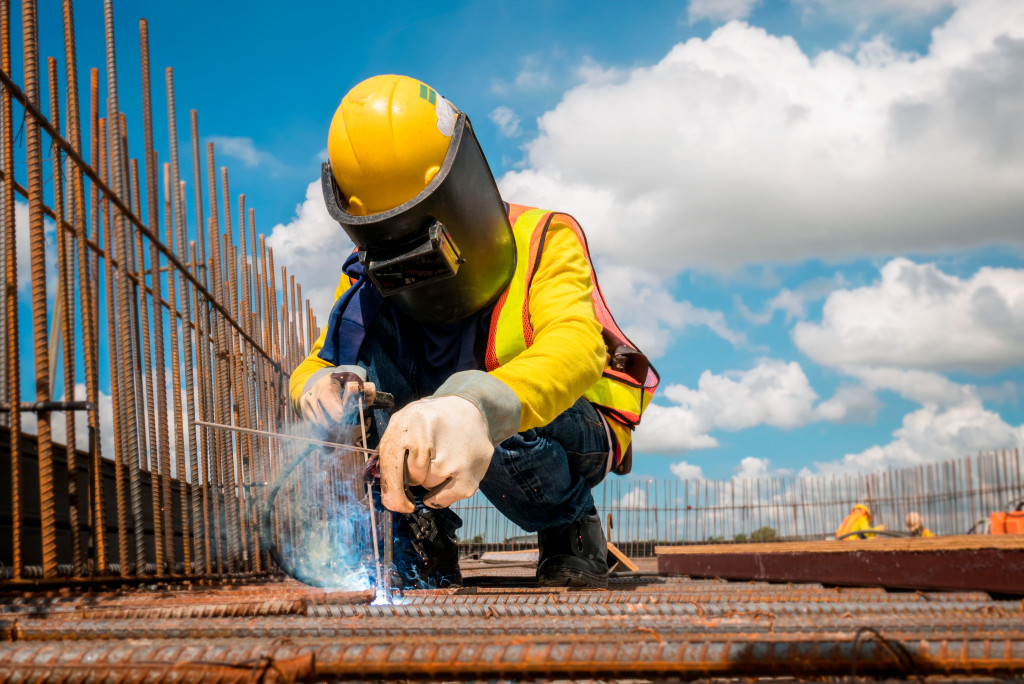
- Implementing sustainable building materials, energy-efficient design, and advanced technologies can reduce the environmental impact of construction.
- Waste management, recycling programs, and water-efficient fixtures and appliances can conserve water.
- Sustainable landscape design utilizing drought-resistant plants, permeable paving, and native vegetation can benefit the environment.
- Sustainable construction has economic benefits such as attracting customers and reducing carbon footprint.
- Business owners should lead the way in sustainability to create a greener future.
The need for sustainable practices has become more apparent with the rising global warming and climate change concerns. Companies are making conscious efforts to reduce their carbon footprint.
Construction is one of the significant contributors to environmental degradation. Therefore, implementing sustainable construction practices is essential for reducing the construction industry’s environmental impact.
This blog post discusses sustainable construction practices that business owners and entrepreneurs can implement to create a greener tomorrow.

Use Sustainable Building Materials
The design and development stage in construction is a crucial time to utilize green building materials. Sustainable building materials have a low environmental impact, making the building or structure more energy-efficient. Green building materials include bamboo, recycled plastics, salvaged woods and metals, straw bales, and cellulose insulation. Using sustainable materials can significantly reduce the carbon footprint of a building.
Source of Materials
When selecting green building materials, consider durability, energy efficiency, and environmental impact. It is essential to research the source of the material and ensure it meets certain sustainability standards. Additionally, look for recycled or recyclable products free of volatile organic compounds (VOCs) and low toxicity.
Energy-Efficient Design
Designing an energy-efficient building can significantly contribute to sustainable construction. A building’s orientation and window placement can reduce energy consumption and promote natural lighting and ventilation.
Advanced Technologies
Advanced technologies such as geothermal heating and efficient insulation systems can also help reduce energy consumption. Reducing energy consumption is a crucial step toward sustainability in the construction industry.
Renewable Resources
Choosing building materials made from renewable resources and using recycled or reused materials can help reduce the environmental impact of construction. People can make a positive difference in the planet’s future by implementing green building practices.
Manage Waste and Recycling
Construction sites produce a lot of waste materials. Managing construction waste and recycling can significantly reduce waste disposed of in landfills. Recycling materials such as metals, wood, and plastics can reduce the environmental impact of a building and save costs for business owners. Implementing a waste management and recycling program on the construction site can help create a greener tomorrow.
Separate Containers
The first step to creating a successful waste management and recycling program is ensuring the correct containers are in place. Having separate containers for glass, paper, plastic, metals, food waste, and other items can help reduce the contamination of recyclable materials. The right receptacles should be labeled clearly so that everyone on site knows what goes where.
Concrete Washout
Construction sites require concrete washout to ensure that the equipment used in making and placing concrete is properly cleaned. This involves cleaning everything from mixing drums and hoppers to hand tools like wheelbarrows.
However, this process can have negative environmental consequences, producing toxic wastewater that may run into nearby ground or surface water sources. To ensure the proper disposal of toxic wastewater, working with a reputable company offering reliable concrete waste disposal services is essential. The company should be able to provide proper containment systems such as tanks, liners, and pipes for wastewater.
Water Conservation
Water is a valuable resource that requires conservation. Water conservation can be achieved in construction sites through water-efficient fixtures and appliances, rainwater harvesting systems, and low-flow toilets.
Water-Efficient Technology
Incorporating water-efficient technologies and reusing treated wastewater can also help conserve water and minimize the environmental impact of a building. Proper landscaping can also reduce the need for supplemental irrigation and help save water.
Real-Time Monitoring
To monitor water usage in construction sites, developers should install real-time monitoring systems that alert them when water consumption reaches a certain level or when there is an unexpected change in flow rate. This will allow developers to quickly identify potential problems and take corrective action if necessary.

Sustainable Landscape Design
Sustainable landscape design is another essential aspect of sustainable construction. Planting drought-resistant plants, using organic maintenance practices, and utilizing permeable paving can reduce the impact of landscape design on the environment.
Reduce Water and Energy Consumption
Sustainable landscaping can also reduce water and energy consumption through shading and ventilation effects. Additionally, using native plants and natural materials provides additional environmental benefits. Sustainable landscaping also provides various other environmental benefits, such as providing habitat for wildlife, reducing air pollution, and improving water quality in local watersheds.
Sustainable construction is not only beneficial to the environment, but it also has economic benefits for business owners. Sustainable buildings attract more customers, save costs in utilities, and reduce the carbon footprint. Implementing sustainable practices such as sustainable building materials, energy-efficient design, waste management and recycling, water conservation, and sustainable landscape design can create a greener tomorrow. It is time for business owners and entrepreneurs to take the lead in sustainability and contribute to building a better future.




